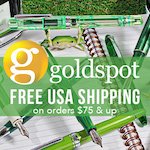This review is by Kalina Wilson, who can also be found at Geminica.com.
The Tombow Fudenosuke Brush Pens (Hard and Soft) initially caught my interest when I discovered they are a favorite tool of the wonderful comics artist Dylan Horrocks. Horrocks states he has drawn "almost everything" in recent years using these pens. Well, alright! That was good enough for me.
These really are good pens. They fill one specific niche perfectly, and it's one that makes them understandably attractive to comics artists/cartoonists: they provide a fine, consistent line that is capable of variation when you want it.
The comparison below demonstrates that these pens don't behave much like brushes when you don't want them to - when writing with them, they seem as (or more?) consistent than the Lamy Safari EF! And on the right is what you get if you apply a little more pressure with the soft pen and make purposeful use of its variability.
I can't provide a new drawing from the Fudenosuke hard pen, since mine is running dry and is just barely dark enough now to make letters. But here's a panel from the 16-page comic I made that used up all that ink.
from my first (and very silly) pulp adventure comic about rival coffee buyers, Dangerous Aromas, which was drawn with the Tombow Fudenosuke Brush Pen (Hard).
That leads me to the pens' only major drawback - they don't have a vast amount of ink in them. Well, if I'm going to love a disposable pen that runs out of ink quickly, at least it's comforting to know that they were made using recycled plastic.
After drawing the Victorian gentleman at the top of this post, I wanted to try the soft pen with a more brushy style. Cue the hippopotamus.
Normally for this kind of brush work, I would go back to a "real" brush pen (one with separate bristles) since that lets you really paint your ink on - but this pen does have a nice quality to it and is capable of handling the job.
The internet seems divided over whether this pen is waterproof or not. I am happy to report that they ARE in fact waterproof. Presumably on certain paper (perhaps heavily sized?) or in certain environments (more humid?) - and certainly if you apply water immediately after drawing - the ink is less waterproof... but I was impressed. I am not including a picture of my test since it shows absolutely no effect from adding water, only one minute after laying down the ink.
As for differences between the hard and soft pens - the hard pen is a little better at lettering, word bubbles, and anything that benefits from a less variable line, while the soft pen's stronger ink flow and increased variability make it better for long strokes, quick strokes, and anything artsy.
If you are a cartoonist, an illustrator, or just like to doodle silly characters during meetings, I heartily recommend both of these pens. But I may be leaning towards the soft pen.
Now for an Obsessive Addendum: Refilling the Non-Refillable Pen.
Someone online reported having refilled their Tombow Fudenosuke pen with fountain pen ink by prying off the end cap and inserting ink using an eyedropper. Since my hard pen has in fact gone dry, I decided to experiment in this direction. I don't recommend it. First off, the recycled plastic is very malleable, so when I pried the end cap off, it got very damaged. Secondly after I dropped the Noodler's Bulletproof into the ink receptacle in the pen, when I took the lid off it leaked out a bunch of that ink. Maybe I missed? Or maybe I put in too much? In any case, I suggest accepting the disposable nature of these pens. They are great for what they are!




